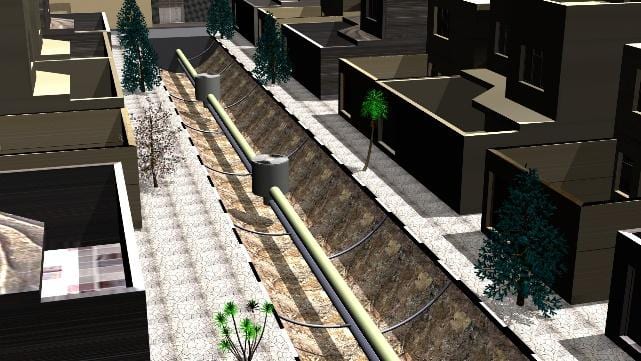Remember that time the beach was closed because of too many contaminants in the water? Well it may have been caused by a combined sewer system in your city, which collects both sewage and rain water into one system.
Combined sewer systems are a way of the past but are still in operation in some cities until modern, separated sewer systems can be installed. To relieve pressure during heavy rain storms, combined sewer systems release rain water mixed with sewage into rivers and streams to prevent the sewage from coming back up your pipes! When this happens say “bye-bye” to those clean waters on beach day.
As the old combined sewer systems are replaced with modern systems that separate rain water from sewage water, maintenance for these separated pipes will change too. When there was only one combined pipe to service, only one manhole was required. Now, new research published in the Canadian Journal of Civil Engineering has looked into the feasibility of providing a single manhole to service both pipes for the separated sewer system.
“This new system is an attempt to improve the concept of the design of traditional sewer systems which have been now in use for approximately 100 years,” said Alaa Abbas, one of the researchers on the project.
The new manhole design keeps sewage waters separate from rain waters by providing an outer and inner chamber for each flow. The advantages include lower costs and saving space, as it reduces the number of manholes needed by combining two into one. The study notes this is particularly advantageous for narrow streets common in Europe and the United Kingdom.
“These streets are already occupied by complex infrastructure services such as potable water, gas, electricity, and communication lines, meaning that finding a space to place another sewer pipe is very challenging,” said Abbas.
Having two chambers in the single manhole, however, requires an overall larger size of manhole and therefore a heavier structure in the ground. The study focused on the effects of forces on the manhole, like vehicles driving over it. The researchers measured how much the manhole sinks into the ground when a force is exerted on it. When designing road and pipe systems, the movement of the manhole is an important consideration to ensure that the connection between the pipes and the manhole do not move too much and break.
Overall, the new manhole performs similarly to the old style with a few additional benefits. “The new system decreases the initial costs and reduces the construction time,” said Abbas. In addition, the stresses the manhole exerted on the soil surrounding it were less than a traditional manhole. Because of this, the study postulates that lighter materials, such as plastics, could be used to construct the manhole instead of the traditional concrete.
Moving forward, further studies will be completed for testing water pressure on the manhole and the construction of the two pipes, one on top of the other. Abbas said his team is working towards developing “an optimum design for a sewer system, using an innovative design for a separate sewer system to decrease the cost, footprint and construction time, and overcome the challenge of installing separate sewer systems in narrow streets.”

A cross-section of a street shows the two separated sewer and storm water pipes that feed into a single manhole. (Patent WO2018215746, 2018)
Read the full paper: Improving the geometry of manholes designed for separate sewer systems in the Canadian Journal of Civil Engineering.




